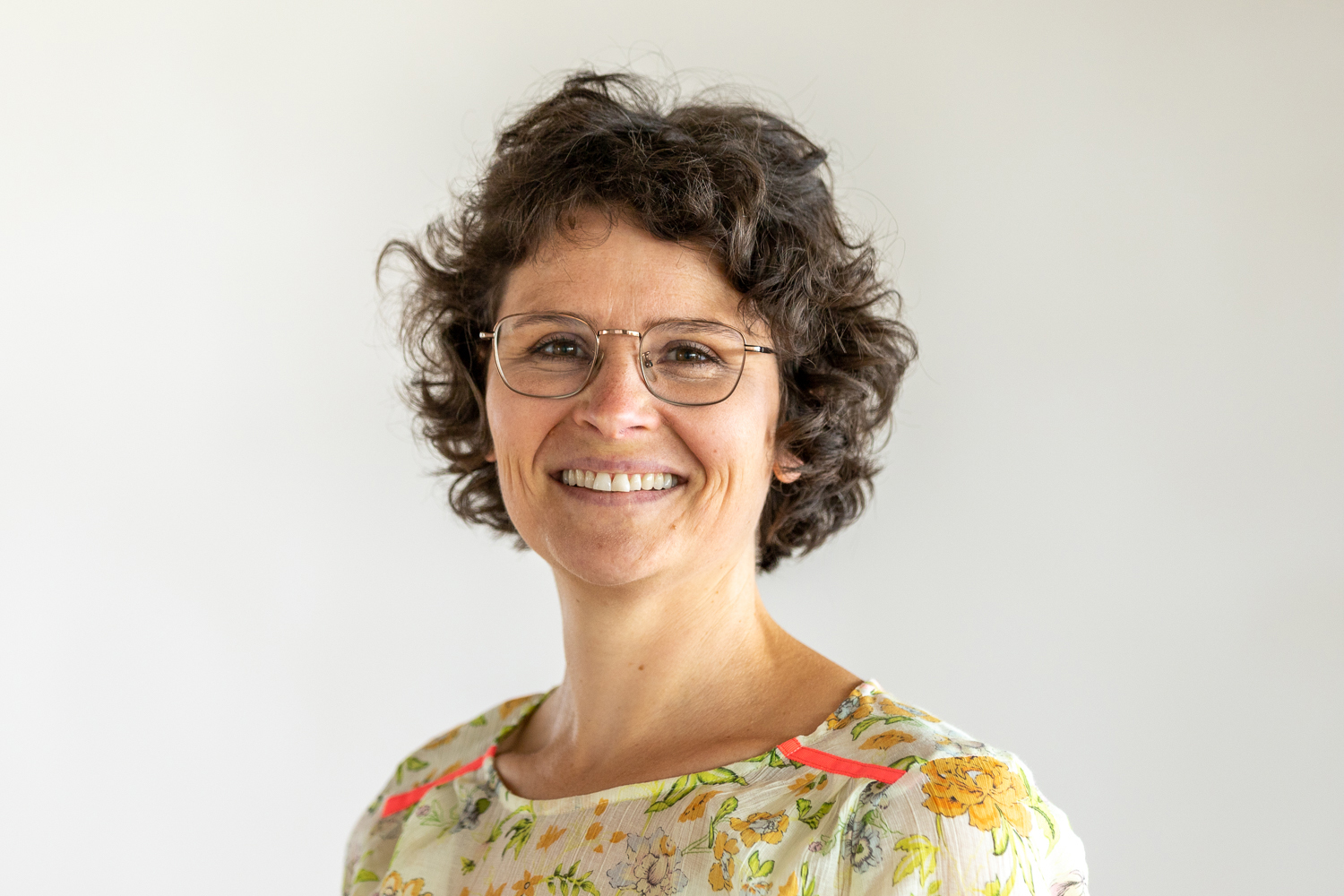Gender meets Engineering Henriette Bertram is the new assistant professor for gender aspects in engineering sciences
Why should engineers include gender and diversity perspectives in their work? In the development of technical products, in the planning of new urban districts? Do engineering professions change when the proportion of women increases? That’s what we wanted to know from Henriette Bertram. She is the new assistant professor for the teaching area “Gender.Ing.” and will offer the topic of gender studies in her courses for Master’s students of all three engineering faculties at TU Braunschweig. Bianca Loschinsky and Heiko Jacobs met with assistant professor Henriette Bertram for an interview.

Henriette Bertram is the new assistant professor for gender aspects in engineering. Photo credit: Kristina Rottig/TU Braunschweig
Welcome to TU Braunschweig, Professor Bertram! Have you settled in well at our university?
Yes, I have. I’ve been at TU Braunschweig since the 1st of May and I’ve been greeted very warmly and welcomed by my colleagues at the Institute for Building Climatology and Energy of Architecture with a large bouquet of flowers. So far, I haven’t given any lectures here yet. So a lot of things will still unfold in the coming weeks and months.
You were previously employed at the Department of Architecture Urban Planning Landscape Planning at the University of Kassel. Why did you decide to come to TU Braunschweig?
I found the advertised job profile so exciting because it brings together a number of interests that I have had throughout my academic life: the gender aspects and the technical-engineering topics. At the same time, the professorship still offers a lot of potential for many other topics. So I have a lot of creative freedom and I can also bring in my own areas of focus. In addition, there are an incredible number of interesting people in the various faculties with whom I would like to work.
Why should engineers take gender research findings into account in their work?
Up to now, there is a very strong overrepresentation of men in the engineering profession. That’s not bad per se. But of course everyone brings a certain view of what one researches or what one thinks is important to research and what one thinks is important to bring from one’s own subject into the world. And there is often a lack of women’s perspectives.
But the topic of gender is not only about women, it is also very much intersectional, i.e. that one tries to think about different disadvantages and categories of difference. The perspectives of non-white, migrant or socially less privileged people are not yet sufficiently taken into account in research and development as well as in tests and applications. Engineers should be made aware of the fact that people have different realities of life and use their products from different contexts.
In the architecture programme, we have had first-semester numbers with 60 to 72 percent female students for years. And now, for the first time, we have more female professors than male professors in our architecture faculty. Is this male profession now becoming a female-dominated one within a generation? Will that change our architecture or the way we deal with it?
That’s a crystal ball question, of course. Well, I do believe that this development can change a profession. Not necessarily within one generation. I believe that architecture, as an artistic, design-oriented engineering profession, has a somewhat easier time than the others in establishing a gender balance, perhaps even a surplus of young women. But it is still the case that there are more male professors than female professors in most architecture faculties. And the founding of offices is also very much male-dominated. Women often set up offices together with their partners, but rarely alone or with other women. This is just slowly developing.
In addition, women’s work is often perceived differently because they sometimes do other projects. Not necessarily these spectacular, singular buildings, but perhaps more innovative housing projects where perhaps a different concept of living together is implemented, but which you can’t put on the front page so well because at first glance they look like a completely normal apartment building. That’s a very pointed and generalised statement, but the tendency is recognisable.
In civil engineering, the proportion is around 40 percent, and rising, compared to around 30 percent a decade ago. Are we witnessing a move towards balanced ratios in the long term?
I can’t really judge that. But women are more likely to choose engineering courses that also focus on socially relevant aspects, such as the environment and resource conservation.
That could perhaps also explain the rising proportion of women. Because in civil engineering, TU Braunschweig focuses strongly on the idea of sustainability as well as digitalisation.

“Engineers should be made aware that they have to think about the fact that people have different realities in life and use their products in different contexts.” Photo credit: Kristina Rottig/TU Braunschweig
In one of your main research areas, you deal with gender- and diversity-sensitive planning and building. You are particularly interested in the compatibility of gainful employment and care work. What structures have hindered compatibility here so far?
The DFG research group is based at the University of Kassel, with the spokesperson Professor Uwe Altrock, in whose team I worked before my appointment. There are a total of nine sub-projects in which we are looking at new, suburban city districts. The starting point is the observation that many cities have tended to prioritise interior development and redensification over the past 20 years and that there has been a trend towards reurbanisation. In the wake of the housing shortage debate, many larger cities that continue to be very attractive and are experiencing growth are now once again designating entirely new neighbourhoods. That was not the case for a long time. And that’s where the DFG research group comes in.
My project is based on a feminist and generally gender-sensitive critique of urban and spatial development that sees suburban residential areas as a spatial manifestation of patriarchy. The idea behind this is that these often monofunctional areas, where there is almost only housing and perhaps a little local supply and transport connections are primarily geared unilaterally to commuting, have in the past favoured traditional family structures.
My research question on this is: How is this criticism, which has been around for 40 years, actually addressed in planning? That is the first work package. Then I would like to look at the residents’ side: Which structures favour or prevent this compatibility? And how can families achieve such compatibility? The city must be developed more from the perspective of care work, because otherwise gainful employment doesn’t work either.
That is actually almost a question of land use plans and development plans.
That’s where it has to start in any case. It should already be included in the calls for proposals that the neighbourhoods should be composed of a mix of small elements and that there should be short distances between them. In addition, it should be possible to have chains of routes that people who do care work often have to travel, for example, shopping, day care, doctor. A reduction in car traffic is desirable to ensure the safety of children and adults in need of care. It also makes sense to have flexible spaces and the possibility to adapt when the structure of the residents and thus their needs change.
What different needs should urban planners take into account today? After all, it’s not just about the women’s perspective.
I look at the whole thing more from the perspective of care work. And how do you manage to do care work without ending up in burnout? My impression is that some of these measures are being implemented, but not from a gender or care perspective, but rather from the perspective of saving resources or space. That is all very important too. But there is still a difference in the details of how you look at spaces or how you look at their use.
What made you decide to do research in this area?
The topics—feminist planning critique, gender-sensitive planning—had not been occupied by anyone in my research network before. The topic is very exciting and also appealed to me personally—as a mother of three and now a new professor and professor’s wife with two different university locations.
What other areas of research will you be working on?
Of course, I would like to start with the DFG project that was approved just a few months ago. In the future, I would like to focus more on the question of environmental justice, but also on communication and participation processes between technology experts and users of, for example, spaces.
What role does science communication play for you?
I think science communication is super important. We also have a responsibility—especially in subjects like urban planning, architecture and other engineering sciences that are so relevant to everyday life—to explain well what we are researching and to create acceptance for new developments. Technical innovation is only worth something if people want to use it. And if communication works well, it is much easier to create acceptance for innovations.
You work at the Institute for Building Climatology and Energy in Architecture (IBEA). But your courses will be open to the Master’s programmes of all three engineering faculties. What do you have planned there?
I have planned to offer an introductory course on “Gender Studies for Engineers” next semester. In the course, I would like to look at products, processes and structures in the engineering sciences and sensitise students to where gender issues have relevance and why we should talk about them at all. It starts with the question: Why do fewer women tend to choose to study engineering? What expectations are also associated with different social roles? It continues with the question about the use of technical artefacts or even design. What does a technical device say about who should potentially use it? What different mobility needs do different users have and how can these be taken into account? It is a mix of social science-based introductions and many practical, experiential elements.
I would like to offer a second course on the blue-green city. This takes place within the framework of the national urban development policy, which organises the project “Fachlicher Nachwuchs entwirft Zukunft” (“Young professionals design the future”) once a year. All architecture and urban planning courses in Germany are invited to participate.
How would you like to encourage students to include these gender and diversity perspectives in their future profession?
My experience has been that once you deal with it, you can’t pretend that these issues don’t exist. Of course, you have to be willing to leave your comfort zone and engage with these issues.
